- Luật
- Hỏi đáp
- Văn bản pháp luật
- Luật Giao Thông Đường Bộ
- Luật Hôn Nhân gia đình
- Luật Hành Chính,khiếu nại tố cáo
- Luật xây dựng
- Luật đất đai,bất động sản
- Luật lao động
- Luật kinh doanh đầu tư
- Luật thương mại
- Luật thuế
- Luật thi hành án
- Luật tố tụng dân sự
- Luật dân sự
- Luật thừa kế
- Luật hình sự
- Văn bản toà án Nghị quyết,án lệ
- Luật chứng khoán
- Video
- NGHIÊN CỨU PHÁP LUẬT
- ĐẦU TƯ CHỨNG KHOÁN
- BIẾN ĐỔI KHÍ HẬU
- Bình luận khoa học hình sự
- Dịch vụ pháp lý
- Tin tức và sự kiện
- Thư giãn

TIN TỨC
fanpage
Thống kê truy cập
- Online: 223
- Hôm nay: 198
- Tháng: 1621
- Tổng truy cập: 5245625
LEADERLESS, CUT OFF, AND ALONE: THE RISKS TO TAIWAN IN THE WAKE OF UKRAINE
Khi các nhà hoạch định chính sách và nhà phân tích đánh giá cuộc chiến ở châu Âu để có những hiểu biết sâu sắc có thể áp dụng cho châu Á, họ đang đi đến ba kết luận ban đầu: Đây sẽ là một câu chuyện cảnh giác cho Trung Quốc, một mô hình cho Đài Loan và một vở kịch cho Hoa Kỳ. Nhưng điều gì sẽ xảy ra nếu cuộc xung đột mang lại một loạt bài học đáng ngại hơn - những bài học mà Bắc Kinh có thể sử dụng để giành lấy nền dân chủ trên đảo?
Đài Loan-Mil-Ex-2016
Nhiều nhà quan sát ngày càng nghi ngờ rằng Trung Quốc sẽ tiến hành một cuộc tấn công vào "tỉnh ngớ ngẩn" của họ sau khi chứng kiến Nga phải vật lộn trên chiến trường và hứng chịu phản ứng dữ dội về kinh tế. Một số người đã trở nên lạc quan hơn rằng Đài Loan có thể bảo vệ chủ quyền trên thực tế của mình khi Ukraine áp đặt chi phí lớn cho các lực lượng xâm lược. Và những người khác đã trở nên tin tưởng hơn rằng Hoa Kỳ có thể dựa vào "khả năng răn đe tổng hợp" để quản lý mối đe dọa xâm lược của Trung Quốc, vốn đã bắt đầu xuất hiện trong tầm tay.
Tuy nhiên, cuộc chiến ở châu Âu thay vào đó có thể thuyết phục các nhà lãnh đạo Trung Quốc tăng gấp đôi nỗ lực làm lung lay ý chí kháng cự của Đài Loan nếu khả năng răn đe bị phá vỡ. Thật vậy, những thất bại của Nga và những thành công của Ukraine cho đến nay có thể khuyến khích Trung Quốc đưa ra các lời đe dọa và sử dụng vũ lực sớm hơn để khiến khả năng can thiệp quân sự của Hoa Kỳ giảm đi và sự đầu hàng của Đài Loan nhiều hơn.
Cụ thể, trong cuộc chiến tranh giành Đài Loan, các nhà lãnh đạo Trung Quốc có thể nhấn mạnh ba hướng hành động ngay từ đầu: Thứ nhất, đưa ra các mối đe dọa hạt nhân để giữ các lực lượng chống xâm lược của Mỹ ở bên lề và kiềm chế xung đột. Thứ hai, áp đặt phong tỏa để cô lập hòn đảo về mặt vật lý và làm tăng nguy cơ leo thang của bất kỳ nỗ lực tiếp tế nào. Thứ ba, cố gắng chặt đầu vai trò lãnh đạo chính trị và quân sự của Đài Loan để làm tê liệt khả năng phòng thủ ngắn hạn của nước này và làm suy yếu khả năng chống chiếm đóng lâu dài hơn.
Mặc dù mỗi hành động đều đã hợp lý trước cuộc xâm lược của Nga, nhưng tất cả chúng dường như có nhiều khả năng xảy ra hơn sau đó. Ở mức tối thiểu, họ có thể làm rõ các tình huống khó xử về chính trị, ngoại giao và quân sự đi kèm với bất kỳ sự can thiệp nào trong tương lai của Hoa Kỳ; làm xói mòn sự sẵn sàng và khả năng của Đài Loan trong việc chống lại một cuộc tấn công; và có lẽ thuyết phục các nhà lãnh đạo Trung Quốc rằng họ có thể bù đắp những khiếm khuyết trong các lực lượng vũ trang chưa được kiểm chứng của mình bằng những điều chỉnh trong chiến lược. Trong trường hợp xấu nhất, họ thậm chí có thể thuyết phục những nhà lãnh đạo đó rằng một cuộc chiến tranh giành Đài Loan sẽ dễ dàng hơn nhiều so với cuộc xung đột ở Ukraine dường như đã chỉ ra.
Brinkmanship ngay từ đầu
Một trong những khía cạnh đáng lo ngại nhất của cuộc chiến ở Ukraine là việc Vladimir Putin sẵn sàng sử dụng thanh kiếm hạt nhân, cả ngầm và rõ ràng, như một cách để ngăn chặn sự can thiệp từ bên ngoài. Ngay từ khi cuộc xung đột bắt đầu, Tổng thống Nga đã cảnh báo khán giả ở các thủ đô khác rằng nếu họ can thiệp vào “hoạt động quân sự đặc biệt” của ông, thì Moscow sẽ “đáp trả ngay lập tức và hậu quả sẽ như thế nào mà bạn chưa từng thấy trong toàn bộ lịch sử của mình”. Chỉ vài ngày sau, khi cuộc xâm lược gặp phải những thất bại sớm, Putin đã chỉ đạo các quan chức quốc phòng cấp cao của mình đặt các lực lượng chiến lược của Nga vào tình trạng “sẵn sàng chiến đấu đặc biệt”.
Mặc dù những hành động này không ngăn cản được Hoa Kỳ và các đồng minh cung cấp vũ khí và thông tin tình báo cho Ukraine, nhưng chúng đã gây ra sự thận trọng và các cuộc tranh luận màu về cách ứng phó. Đáng chú ý, Washington đã hoãn chuyến bay thử tên lửa đạn đạo xuyên lục địa Minuteman III theo kế hoạch sau khi Nga tăng mức cảnh báo. Quan trọng hơn, các quan chức Mỹ đã nhiều lần đánh đồng việc triển khai quân đội Mỹ đến Ukraine hoặc thực thi vùng cấm bay đối với quốc gia bị bao vây trong Thế chiến III.
Mọi cuộc đối đầu giữa các cường quốc sẽ diễn ra dưới cái bóng hạt nhân. Tuy nhiên, vũ khí hạt nhân được cho là sẽ đóng một vai trò quan trọng chủ yếu khi một cuộc đụng độ đang diễn ra tốt đẹp. Trong trường hợp của Nga, các nhà phân tích lo ngại về ngưỡng leo thang của nước này - một chủ đề tranh luận lâu nay - đã nhấn mạnh khả năng Moscow có thể dùng đến các mối đe dọa hạt nhân, trình diễn hạt nhân hoặc hạn chế sử dụng hạt nhân sau khi các lực lượng thông thường của họ không thể tự mình giành được chiến thắng. . Thật vậy, những lo ngại này chỉ tăng lên khi những tổn thất của Nga ở Ukraine tiếp tục gia tăng. Trong trường hợp của Trung Quốc, các nhà phân tích cũng cho rằng nước này có thể bị đẩy đến bờ vực hạt nhân nếu các lực lượng thông thường của họ chùn bước, đặc biệt nếu các cuộc tấn công của Hoa Kỳ vào các phương tiện giao hàng lưỡng dụng, tài sản giám sát và hệ thống chỉ huy và kiểm soát được Bắc Kinh nhận thấy. như một nỗ lực để làm suy giảm khả năng răn đe hạt nhân của nó.
Ngược lại, cuộc chiến ở Ukraine dường như làm tăng khả năng Trung Quốc có thể tham gia phát tín hiệu hạt nhân và động cơ hạt nhân ngay khi bắt đầu chiến dịch cưỡng chế chống lại Đài Loan, chứ không chỉ trong giai đoạn sau của một nỗ lực thất bại. Bắc Kinh có thể tham gia vào cái mà các nhà phân tích gọi là "răn đe chiến lược tổng hợp" để thể hiện quyết tâm của mình và định hình tính toán rủi ro của đối thủ. Việc phát tín hiệu như vậy có thể liên quan đến việc tăng mức độ sẵn sàng, triển khai lực lượng, mô phỏng các hoạt động chuẩn bị và tiến hành các cuộc tập trận và kiểm tra. Mục tiêu của các bước này là gây sợ hãi, tạo áp lực tâm lý và tạo ra sự không chắc chắn.
Làm như vậy có thể gây ra sự kiềm chế lớn hơn từ phía Hoa Kỳ, đặc biệt là khi can thiệp quân sự trực tiếp và tạo ra khoảng cách giữa Washington và các đồng minh tiền tuyến như Nhật Bản, những nước có thể thấy mình trước mắt. Kho vũ khí hạt nhân chiến lược và sân khấu ngày càng tăng của Bắc Kinh chỉ làm cho loại kịch bản này trở nên hợp lý hơn, trong chừng mực như một biện pháp răn đe hạt nhân có thể sống sót hơn và các lựa chọn hạt nhân hạn chế hơn có nghĩa là các mối đe dọa leo thang sẽ đáng tin hơn.
Các mối đe dọa hạt nhân ban đầu cũng có thể giúp giải quyết tình thế tiến thoái lưỡng nan chiến lược cốt lõi mà Trung Quốc sẽ phải đối mặt trong trường hợp Đài Loan: tấn công Hoa Kỳ sớm và làm suy yếu khả năng can thiệp hoặc từ bỏ một cuộc tấn công vào Hoa Kỳ và làm giảm khả năng can thiệp của họ. Một mặt, Bắc Kinh có thể tiến hành các cuộc tấn công thông thường nhằm vào các lực lượng tiền phương của Mỹ khi bắt đầu xung đột. Mặc dù một cuộc tấn công đầu tiên sẽ làm suy giảm khả năng đáp trả của Washington, nhưng nó gần như chắc chắn sẽ đảm bảo rằng một cuộc đáp trả quân sự sắp diễn ra. Mặt khác, Bắc Kinh có thể để nguyên lực lượng Hoa Kỳ, ít nhất là ban đầu, và tập trung chiến dịch quân sự vào mục tiêu chính của họ. Mặc dù sự kiềm chế sẽ khiến hiệu quả của những lực lượng đó không bị giảm sút, nhưng nó cũng có thể thuyết phục Washington cắt giảm sự can dự của mình.
Xem những khó khăn mà Nga đã trải qua ở Ukraine có thể đưa ra quy mô đối với lựa chọn thứ hai. Rốt cuộc, một cuộc chiến chống lại Đài Loan có thể đủ khó khăn nếu không có sự tham gia của Hoa Kỳ cùng lúc. Tuy nhiên, chơi lá bài hạt nhân sớm có thể khiến lựa chọn này trở nên hấp dẫn hơn, bằng cách làm tăng thêm triển vọng rằng Hoa Kỳ sẽ đứng ngoài cuộc và cuộc chiến chống Đài Loan sẽ được kiềm chế.
Căng thẳng đầu tiên, sau đó tấn công
Cuộc chiến ở Ukraine cũng là một lời nhắc nhở rõ ràng rằng một hậu vệ nhỏ hơn nhưng có động cơ tốt hơn có thể chống lại kẻ tấn công vượt trội về số lượng và chất lượng, đặc biệt khi hậu vệ đó nhận được sự hỗ trợ quan trọng từ các bên bên ngoài - và thậm chí còn hơn thế khi kẻ tấn công phạm tội lập kế hoạch kém và thực hiện. Được trang bị vũ khí chống tăng và phòng không di động do các quốc gia phương Tây cung cấp, cùng với thông tin tình báo thời gian thực từ
Xem thêm về văn bản nguồn nàyNhập văn bản nguồn để có thông tin dịch thuật bổ sung
Brinkmanship ngay từ đầu
Một trong những khía cạnh đáng lo ngại nhất của cuộc chiến ở Ukraine là việc Vladimir Putin sẵn sàng sử dụng thanh kiếm hạt nhân, cả ngầm và rõ ràng, như một cách để ngăn chặn sự can thiệp từ bên ngoài. Ngay từ khi cuộc xung đột bắt đầu, Tổng thống Nga đã cảnh báo khán giả ở các thủ đô khác rằng nếu họ can thiệp vào “hoạt động quân sự đặc biệt” của ông, thì Moscow sẽ “đáp trả ngay lập tức và hậu quả sẽ như thế nào mà bạn chưa từng thấy trong toàn bộ lịch sử của mình”. Chỉ vài ngày sau, khi cuộc xâm lược gặp phải những thất bại sớm, Putin đã chỉ đạo các quan chức quốc phòng cấp cao của mình đặt các lực lượng chiến lược của Nga vào tình trạng “sẵn sàng chiến đấu đặc biệt”.
Mặc dù những hành động này không ngăn cản được Hoa Kỳ và các đồng minh cung cấp vũ khí và thông tin tình báo cho Ukraine, nhưng chúng đã gây ra sự thận trọng và các cuộc tranh luận màu về cách ứng phó. Đáng chú ý, Washington đã hoãn chuyến bay thử tên lửa đạn đạo xuyên lục địa Minuteman III theo kế hoạch sau khi Nga tăng mức cảnh báo. Quan trọng hơn, các quan chức Mỹ đã nhiều lần đánh đồng việc triển khai quân đội Mỹ đến Ukraine hoặc thực thi vùng cấm bay đối với quốc gia bị bao vây trong Thế chiến III.
Mọi cuộc đối đầu giữa các cường quốc sẽ diễn ra dưới cái bóng hạt nhân. Tuy nhiên, vũ khí hạt nhân được cho là sẽ đóng một vai trò quan trọng chủ yếu khi một cuộc đụng độ đang diễn ra tốt đẹp. Trong trường hợp của Nga, các nhà phân tích lo ngại về ngưỡng leo thang của nước này - một chủ đề tranh luận lâu nay - đã nhấn mạnh khả năng Moscow có thể dùng đến các mối đe dọa hạt nhân, trình diễn hạt nhân hoặc hạn chế sử dụng hạt nhân sau khi các lực lượng thông thường của họ không thể tự mình giành được chiến thắng. . Thật vậy, những lo ngại này chỉ tăng lên khi những tổn thất của Nga ở Ukraine tiếp tục gia tăng. Trong trường hợp của Trung Quốc, các nhà phân tích cũng cho rằng nước này có thể bị đẩy đến bờ vực hạt nhân nếu các lực lượng thông thường của họ chùn bước, đặc biệt nếu các cuộc tấn công của Hoa Kỳ vào các phương tiện giao hàng lưỡng dụng, tài sản giám sát và hệ thống chỉ huy và kiểm soát được Bắc Kinh nhận thấy. như một nỗ lực để làm suy giảm khả năng răn đe hạt nhân của nó.
Ngược lại, cuộc chiến ở Ukraine dường như làm tăng khả năng Trung Quốc có thể tham gia phát tín hiệu hạt nhân và động cơ hạt nhân ngay khi bắt đầu chiến dịch cưỡng chế chống lại Đài Loan, chứ không chỉ trong giai đoạn sau của một nỗ lực thất bại. Bắc Kinh có thể tham gia vào cái mà các nhà phân tích gọi là "răn đe chiến lược tổng hợp" để thể hiện quyết tâm của mình và định hình tính toán rủi ro của đối thủ. Những tín hiệu như vậy có thể liên quan đến việc tăng mức độ sẵn sàng, triển khai lực lượng, mô phỏng các hoạt động chuẩn bị và tiến hành
As policymakers and analysts evaluate the war in Europe for insights that might be applicable to Asia, they are reaching three early conclusions: It should serve as a cautionary tale for China, a model for Taiwan, and a playbook for the United States. But what if the conflict yields a more ominous set of lessons — lessons that Beijing could use to seize the island democracy?

Many observers have become more skeptical that China would launch an assault on its “wayward province” after seeing Russia struggle on the battlefield and suffer an economic backlash. Some have become more optimistic that Taiwan could defend its de facto sovereignty as Ukraine imposes heavy costs on invading forces. And others have become more confident that the United States can rely on “integrated deterrence” to manage the threat of Chinese aggression, which was beginning to appear close at hand.
Yet the war in Europe might instead convince Chinese leaders to double down on efforts to shatter Taiwan’s will to resist should deterrence break down. Indeed, Russian failures and Ukrainian successes to date might incentivize China to issue threats and use force earlier to make U.S. military intervention less likely and Taiwanese capitulation more so.
Specifically, during a war over Taiwan, Chinese leaders could emphasize three courses of action from the very start: First, issue nuclear threats to keep U.S. counter-invasion forces on the sidelines and keep the conflict contained. Second, impose a blockade to physically isolate the island and raise the escalatory risk of any resupply efforts. Third, attempt to decapitate Taiwan’s political and military leadership to cripple its near-term defenses and undermine longer-term resistance to occupation.
Although each course of action was already plausible before Russia’s invasion, all of them seem more likely in its aftermath. At a minimum, they could sharpen the political, diplomatic, and military dilemmas that would accompany any prospective U.S. intervention; erode Taiwan’s willingness and ability to hold out against an assault; and perhaps convince Chinese leaders that they can compensate for deficiencies in their untested armed forces with adjustments in strategy. In the worst case, they might even persuade those leaders that a war over Taiwan would be far easier than the conflict in Ukraine would seem to indicate.
Brinkmanship From the Beginning
One of the most worrisome aspects of the war in Ukraine has been Vladimir Putin’s willingness to rattle the nuclear sabre, both implicitly and explicitly, as a way of deterring outside intervention. From the moment the conflict began, the Russian president warned audiences in other capitals that if they interfered with his “special military operation,” Moscow would “respond immediately, and the consequences will be such as you have never seen in your entire history.” Just days later, as the invasion suffered early setbacks, Putin directed his senior defense officials to place Russian strategic forces on “special combat readiness.”
Although these actions have not prevented the United States and its allies from providing arms and intelligence to Ukraine, they have induced caution and colored debates over how to respond. Notably, Washington postponed a planned Minuteman III intercontinental ballistic missile test flight following Russia’s increased alert level. More importantly, U.S. officials have repeatedly equated deploying American troops to Ukraine or enforcing a no-fly zone over the besieged nation with World War III.
Any confrontation between major powers will take place under the nuclear shadow. Yet nuclear weapons are expected to play a major role mainly when a clash is well underway. In the case of Russia, analysts concerned about its escalation threshold — a longstanding topic of debate — have emphasized the possibility that Moscow might resort to nuclear threats, nuclear demonstrations, or limited nuclear employment after its conventional forces fail to deliver a victory on their own. Indeed, these concerns have only increased as Russia’s losses in Ukraine have continued to mount. In the case of China, analysts have similarly suggested that it could be pushed to the nuclear brink should its conventional forces falter, especially if U.S. strikes on dual-use delivery vehicles, surveillance assets, and command-and-control systems are perceived by Beijing as an attempt to degrade its nuclear deterrent.
By contrast, the war in Ukraine seems to increase the likelihood that China might engage in nuclear signaling and nuclear brinkmanship at the very start of a coercive campaign against Taiwan, not just in the later stages of a losing effort. Beijing could engage in what analysts have called “integrated strategic deterrence” to demonstrate its resolve and to shape the risk calculus of its opponents. Such signaling could involve increasing readiness levels, deploying forces, simulating operational preparations, and conducting exercises and tests. The goals of these steps would be to instill fear, apply psychological pressure, and create uncertainty.
Doing so could induce greater restraint on the part of the United States, particularly when it comes to direct military intervention, and drive a wedge between Washington and frontline allies like Japan that might find themselves in the immediate crosshairs. Beijing’s growing arsenal of strategic and theater nuclear capabilities only makes this type of scenario more plausible, insofar as a more survivable nuclear deterrent and more limited nuclear options mean that escalatory threats will appear more credible.
Early nuclear threats could also help to resolve a core strategic dilemma that China would confront during a Taiwan contingency: Strike at the United States early and undermine its ability to intervene or forgo an attack on the United States and undercut its willingness to intervene. On the one hand, Beijing could launch conventional attacks on forward-operating U.S. forces at the beginning of a conflict. Although a first strike would degrade Washington’s ability to respond, it would almost certainly guarantee that a military response would be forthcoming. On the other hand, Beijing could leave U.S. forces intact, at least initially, and focus its military campaign on its main target. Although restraint would leave the effectiveness of those forces undiminished, it might also convince Washington to curtail its involvement.
Watching the difficulties that Russia has experienced in Ukraine might tip the scales toward the latter option. After all, a fight against Taiwan could be difficult enough without taking on the United States at the same time. Playing the nuclear card early might make this option even more tempting, though, by further increasing the prospect that the United States would stay out and that the war against Taiwan would stay contained.
First Strangle, Then Strike
The war in Ukraine also serves as a stark reminder that a smaller but better motivated defender can fend off a quantitatively and qualitatively superior attacker, particularly when that defender receives critical support from outside parties — and even more so when the attacker is guilty of poor planning and execution. Armed with man-portable air defense and anti-tank weapons supplied by Western nations, along with real-time intelligence from the United States, Ukrainian forces have inflicted a heavy toll on Russia in both personnel and equipment.
These developments are already spurring calls for Washington to accelerate weapons shipments to Taiwan, and for Taipei to stockpile those weapons in advance of a conflict. During a war, moreover, the United States would have strong incentives to replenish Taiwan’s inventory of weapons and help to keep it in the fight. This is especially the case given an emerging consensus among analysts that the ability to conduct a protracted and irregular campaign of resistance should be a key element of Taiwan’s defense strategy.
Ukraine, of course, has the advantage of sharing land borders with NATO members, making resupply of matériel relatively easy, albeit not without risk. As an island nation, however, Taiwan is inherently easier to isolate, especially by an aggressor with considerable air and maritime capabilities. Moreover, the island has only two major ports to the north and south in Keelung and Kaohsiung, respectively, with few alternative locations on its Pacific coast to offload large quantities of goods.
What might this mean for China? The People’s Liberation Army (PLA) has several options should it try to establish control over Taiwan by force, including amphibious assault, air and missile bombardment, and air and maritime blockade. In reality, a campaign against the island would probably include elements of all three. But the lessons of Ukraine could influence the sequencing and level of effort put into them. Simply put, there would be a powerful rationale for China to seal off Taiwan as quickly and completely as possible, making a blockade the tip of the spear — an approach consistent with PLA doctrine.
Taiwan’s defense ministry recently reported that the PLA could conduct a joint blockade campaign to sever the island’s lines of communication, thereby stemming the flow of “military supplies and logistics resources.” To implement a blockade, the PLA could lay mines by sea and air, scuttle ships at key chokepoints, deploy warships and submarines to cordon off Taiwan, and declare air and maritime exclusion zones. It could even engage in a “firepower blockade,” using missiles and air-delivered munitions to bombard shore facilities and ships, either tied up at pierside or in transit.
In this scenario, a blockade would not be aimed primarily at starving out the Taiwanese. Instead, the immediate goal would be to preclude the substantial inflow of supplies, such as air-defense and anti-ship missiles, that could shift the tactical balance toward the defender. The longer-term goals would be to prevent outside parties from sustaining any resistance movement that might emerge if the PLA is able to defeat counter-invasion forces. In either case, moreover, efforts to run a blockade would be extremely risky if the cordon were accompanied by clear nuclear threats.
Leading with a blockade in a prelude to a larger air and missile campaign and an all-out invasion would offer an added benefit for China. Mobilizing for an assault, especially an amphibious operation, would be difficult to disguise (another potential lesson from the war in Ukraine). A blockade, by contrast, could probably be implemented more rapidly under the guise of fleet or missile exercises; air, maritime, or undersea incursions; civilian or paramilitary fleet deployments; or some combination of these tactics. Beijing could thus begin to coerce Taiwan across localized offshore and inshore areas with comparatively little warning.
The United States and its allies might struggle to formulate effective diplomatic and military countermeasures against such calibrated, lower-intensity coercion, buying time for China to build up its invasion force and allowing Beijing to retain the initiative. Meanwhile, the wider mobilization would still pose a menacing threat in the background, as its expected completion would give China the hammer to bring down on Taiwan and furnish Beijing with more coercive leverage.
Aiming for the Head
A final aspect of the war in Ukraine that stands out, and that could reshape how China approaches a conflict with Taiwan, is the importance of leadership. Most importantly, Ukrainian President Volodymyr Zelenskyy has, from humble beginnings, emerged as an impressive wartime leader who refused to flee the country or its capital and continues to motivate his people and marshal international support for their cause. Likewise, local leaders have been lauded for their steadfastness and bravery. Russia, it seems, clearly recognizes the significance of these individuals, as evidenced by alleged assassination attempts against Zelenskyy and the kidnapping of Melitopol’s mayor. For its part, China might learn a similar lesson.
Indeed, PLA writings have held up “decapitation operations” as an important element of a larger campaign to subdue Taiwan. The Chinese National Defense University’s 2020 Science of Military Strategy calls for delivering “heavy blows” against “military and political leaders,” command and control networks, politically symbolic sites, and so forth as major targets of “system destruction warfare.” Eliminating political and military leaders through the use of fifth column saboteurs, special operations units, and missile bombardment against key sites would, at a minimum, disrupt Taiwanese command and control, making it more difficult to mount an effective defense.
Taiwanese defense officials have warned about this threat. In fact, they take the danger so seriously that they have stood up a joint unit dedicated to countering attempts at eliminating the leadership. Taipei has good reason to fear such high-value targeting. Through decapitation, the PLA would kill or capture national and local leaders who could otherwise maintain command and control of forces, serve as a symbol of organized resistance, galvanize international support, and lead the transition from conventional conflict to insurgency, should it become necessary. If successful, a decapitation operation could snuff out an incipient national movement that girds the Taiwanese for a long fight, brightening the PLA’s prospects for a quick victory.
Learning a Dangerous Set of Lessons
The violence that Russia has unleashed upon Ukraine is hard to fathom, but the difficulties it has encountered so far have raised hopes in some corners that similar acts of aggression might be avoided elsewhere, particularly Northeast Asia. Unfortunately, there are reasons to doubt that China will suddenly embrace restraint when it comes to its dealings with Taiwan. Given their apparent determination to absorb the island, Chinese leaders might instead learn a dangerous set of lessons from the war in Eastern Europe, even if they judge that a military assault might be harder than they had anticipated, and that the international backlash to aggression might be more severe than they had hoped.
Rather than set their aims aside, Chinese leaders might opt to adjust their methods or even double down on their preferred strategies. That could involve making nuclear threats right from the start to put the United States on the back foot and give allies like Japan cold feet. It could also entail imposing an air and maritime blockade against Taiwan to seal off the island at the outset and ensure that Washington would need to put its own forces in harm’s way to provide Taiwan with material assistance. And it could require early decapitation attacks on national and local leaders to disrupt Taiwan’s defenses and remove key figures that the international community could work with and rally behind.
A series of early blows that left Taiwan leaderless, cut off, and alone could be psychologically devastating to the defenders, shattering their will to resist. China could then more easily maneuver the island into submission without prolonged fighting, an ideal outcome for Chinese policymakers and commanders. Even if the Taiwanese proved to be more resilient than anticipated and refused to buckle under intense pressure, Beijing would still be able to fall back on its military might to impose its will on the island.
Brinkmanship, blockade, and decapitation are well documented in PLA writings, so they are hardly new to U.S. planners watching the Chinese military. However, the timing and sequencing of these actions would likely put U.S. officials in a difficult bind on several fronts from the get-go. China could frontload its coercive efforts to maximize its first-mover advantage, keep the United States off balance, and force U.S. officials to react rapidly to fast-moving events. Moreover, Beijing would put the onus on Washington to make the next escalatory moves. American policymakers would have to match or outdo Chinese demonstrations of resolve and run a blockade in the opening phases of a Chinese campaign against Taiwan. More troubling, they would have little recourse should the PLA successfully decapitate the Taiwanese leadership.
To keep pace with these earlier-than-expected political and military challenges, U.S. leaders would have to assume much greater risks at the outset and make weighty decisions sooner and faster than they would otherwise prefer. Conversely, inaction, indecision, or tepid responses could help China set the conditions of the conflict while foreclosing American options.
Evan Braden Montgomery is the director of Research and Studies at the Center for Strategic and Budgetary Assessments (CSBA). Toshi Yoshihara is a Senior Fellow at CSBA.
Các bài viết khác
- Vài nét Dự báo thời đại phục hưng và khai sáng của loài người sau đại dịch Corona-2019.7-2021(khởi đầu từ tháng 9 năm giáp thìn 2024) (25.06.2021)
- Từ sự kiện Tổng biên tập báo TIME Greta Thunberg là Nhân vật của năm 2019 đến báo cáo Biến đổi khí hậu Phúc trình của IPCC báo động đỏ cho nhân loại 82021 (15.01.2020)
- Tác động của xung đột Nga-Ukraine: Khả năng về chiến tranh lạnh mới (11.04.2022)
- Chợ truyền thống ở TP.HCM và Hà Nội ngày càng ế ẩm (11.04.2022)
- Victor McFarland Trật tự Kinh tế Quốc tế Mới (11.04.2022)






















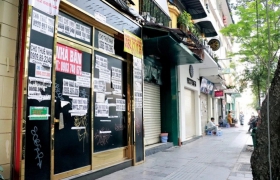
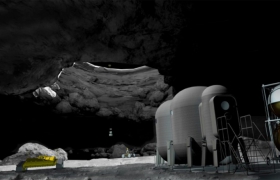

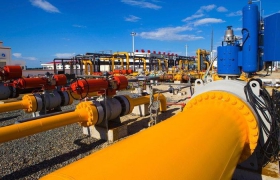




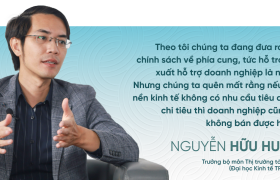

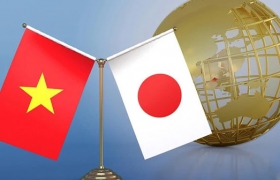
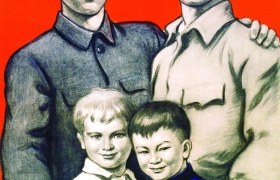
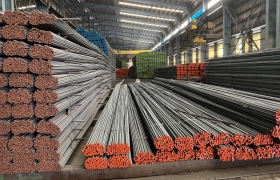







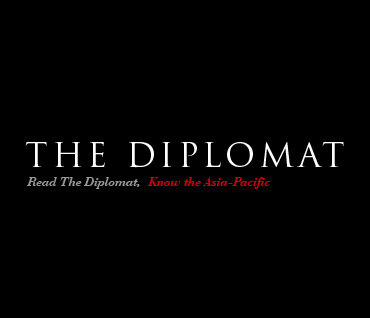
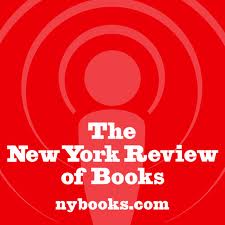






 Yahoo:
Yahoo: 